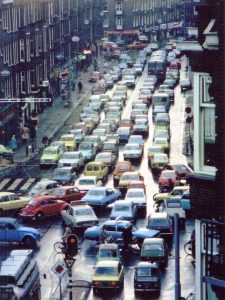Cars are capable of faster speeds than other modes of transport, but that doesn’t necessarily mean they are quicker.For a myriad of reasons, transport has made a comeback in the political agenda. It is high on the priorities’ list of the electorate so politicians tread very cautiously to ensure they serve the people who keep them in power. Those in power also evidently enjoy the limelight, especially when a multi-million euro figure is attached to the headlines of a news article. These two factors seem to be enough of a motivation for any politician to expect automatic agreement and support for the road projects being proposed. This however is not always the case, considering the latest spate of criticism which the contemplated road projects are receiving, not just from the environmentalists but from all those who feel they are not being served.
After years of seeing our roads left to rot, finally our roads are having a much needed cosmetic surgery. This facelift is applied not just to the main roads, but even to the urbanised village core streets where people shop, chat, eat and drink. We are not simply resurfacing the streets, but also redesigning them. But for whom, or rather, for what are these upgrades being done?
The answer is simple: Cars.
Cars dominate our landscape. Cars give us the freedom to travel to further destinations previously thought impossible to reach. Yet, in this day and age, we have become slaves to the same metal box that ‘liberated us’. Visiting a relative on the other side of town? Better get into the car, and I hope they put out a chair in the closest parking space, to reserve it for you. Going to University? You’ll look dumb if you don’t drive.
We rarely consider the consequences of our actions in a wider context. As it happens, the same decision we take is simultaneously repeated by hundreds of other people in our close proximity alone. The repercussions are out there for all to see. Unfortunately, these new road designs fail to address the elephant in the room. The fact that our roads experience 47 new licensed vehicles every day is clear proof that we are not doing enough to start reversing these numbers. We only worry about how we can fit these 47 extra cars per day on our roads.
The only short-term fix for congestion seems to be road widening, often at the expense of our environment and the wellbeing of our community. Every city in the world that has implemented road-widening projects has suffered a phenomenon called ‘induced-demand’, where after the supply of new roads increases, so does future car-growth increase exponentially. This cycle can go on forever, however, given that we live in a small island, it is not only unsustainable but practically impossible.
The root of the problem lies in the fact that road architects and engineers are still designing our roads for cars. Given that the average range of commute in Malta is 5km, driving a car should not take more than 10 minutes, right? Sadly, it takes much more. By the time you’ve wasted being stuck in traffic and trying to find a parking spot, that 10 minute drive becomes a 60 minute nightmare.
Fortunately there are real solutions. Sadly, they’re not being looked at seriously. One way of addressing traffic problems is to facilitate the use of bicycles and rendering roads more pedestrian-friendly. Before people start arguing that we are not the Netherlands, this photo below will act as a reminder that the Dutch too suffered from the same problems we are facing today.

Today’s technology is helping us to overcome many challenges. When we usually combine the words ‘bicycles’ and ‘Malta’ in the same sentence, the reply is something similar to “it’s too hilly”. Cycling in the Netherlands is not popular because it is flat, but because safe infrastructure is provided throughout. Yet pedelecs (pedal assisted bicycles) are today a solution to the “too hilly” problem. Pedelecs are bicycles with an inbuilt motor that assists you when you need it most. As long as you keep pedalling, riding uphill will become an easy task with very little effort from the rider. People can today also benefit from grants and VAT rebates, given that pedelecs are still a bit pricey. However, the advantages of buying a pedelec are that it saves you a lot of time and money compared to using your car, making it is a clever investment.
So what is stopping a lot of people from buying them? From what I can observe and what people tell me, it is the lack of safe infrastructure.
Cycling in Malta is still deemed as a dangerous practice and reserved only for those either brave enough or crazy enough to do it. What road engineers and politicians fail to see is the plethora of benefits associated with cycling in various sectors. Given that Malta has a high rate of obesity, any type of physical activity should be encouraged. In places where cyclists and pedestrians are prioritised over other modes of transport, businesses thrive. Bicycles offer the same freedom of commuting to places, but at less time, whilst ensuring that we keep ourselves fit and healthy.
It is indeed time to design our roads for those who actually use them: us, the people.

